#HTML tags for forms
Explore tagged Tumblr posts
Text
spent a good 20 minutes yesterday daydreaming about what a hypothetical personal website for myself would look like
#one of these days ill learn html#plum rambles#if i implement any kind of search or filtering system#youll be able to drag an drop little blocks labeled with boolean operators into it#there would be an accessibility settings button#and settings would be saved with cookies#everything. EVERYTHING would have tooltips#and lists would be categorized with silly little icons for different categories#thered be a legend at the top of the page where you could click on an icon to filter it#i want it to be like. something you can play with. toy block ass website#the home page would have art of me (irl human appearance) and Tir (turtlesona) posing back to back#with buttons for the main pages to the right of them#the top or bottom of the site would have a banner saying that i dont know what im doing and to contact me#if you have accessibility concerns or encounter bugs#maybe have a little google form as an alternative to emailing me bc emails are scary!!#anyways. um.#plum rambles (in the tags)#web design
0 notes
Text
A Brief Guide on Uploading ChoiceScript Demos to Itch.io
Since Dashingdon is shutting down, and there will be a lot of folks wanting to host their ChoiceScript demos elsewhere, I thought it'd be a good idea to provide a brief guide on how to do so for itch.io.
This is for Windows in the folder actions, but it shouldn't be too difficult for folks to translate for Mac. This also assumes you haven't changed any of the files within your game folder other than those found under 'scenes'.
Within your game folder, locate the 'web' subfolder, right click it and select 'Send to' then 'Compressed (zipped) folder. Name your newly compressed file something sensible, and I recommend moving it to a new folder outside of your game files, just to keep everything neat and tidy.

2. Assuming you already have an itch.io account, navigate to your dashboard, and click the 'Create New Project' button.

3. Name your project as you like, and under 'Kind of project', select the 'HTML' option.

4. Set the 'Pricing' to 'No Payments', you cannot use ChoiceScript for profit unless it is with the Choice of Games or Hosted Games publishing labels. No one wants to get in trouble unnecessarily here.
5. In the Uploads section, upload your newly zipped file we made in step one. After it's finished uploading, you'll be given one drop down and two tick boxes. You need to tick the 'This file will be played in the browser' option.

6. I've found so far that 'Viewport dimensions' work quite well for desktop at 1080 x 640. Either use these numbers or experiment and find what works best for you.
7. You must tick the 'Enable scrollbars' option for your game to display properly, otherwise options, text and buttons can be clipped off the bottom of the viewport.

8. Continue filling out the rest of the form, or skip it for now and scroll all the way to the bottom to the 'Visibility & access' section. Here make sure you have 'Draft' selected. This prevents others from finding your game until you're ready, and I always recommend play testing things before you make your work public.
9. Finally, hit the 'Save' button, then go and have a look at your creation by hitting the 'View page' link. And there you go! When you're ready for public release, just change the option in section 8 to 'Public'.
---
A few things to bear in mind about hosting on itch.io:
There isn't currently any way for your readers to save their game. I'm sure someone could write in a plugin similar to Dashingdon's at some point, but as for right now, this isn't available. See addition/edit below.
Make sure you properly tag your game with the 'choicescript' and 'interactive-fiction' tags. There are an awful lot of games on itch.io and it's easy to get lost in the crowd. Make sure folks can find you by having the right tags.
I hope this brief guide was useful to folks.
Best of luck to you with your writing!
---
Addition/Edit:
Thanks to @hpowellsmith for bringing this to my attention. You can add save functionality to your game by using this addon:
The ChoiceScript Save Plugin
Just tried it out on my own game and it works perfectly.
Rather than run through the addon author's own tutorial here, I'll just forward you to the Readme on their Github page.
One small note I would add is when it asks you to make the two small additions to your index file, make sure you right click the file and open it with your coding program, don't double-click it as this will just open it in an internet browser, and it won't give you the access to what you need to change.
717 notes
·
View notes
Text
Old war vet of the ST/ Garashir tag: asking for your best long form (20k+) fics. Ive spent 18yrs reading fanfic. From KSarchive to FF and even Quizilla to finally A03. Hit me w something from a Html page from 97, give me your hidden gems. I NEED a new Garashir fic.
87 notes
·
View notes
Note
*me sitting here right now with a word doc opened because from now until tomorrow evening is all filler time for me* 🥺
Stoppppppp, you're making me embarrassed now.......but....but....here's something I started on yesterday.................a preview......only for you, Roxie, my fellow Caleb enabler........
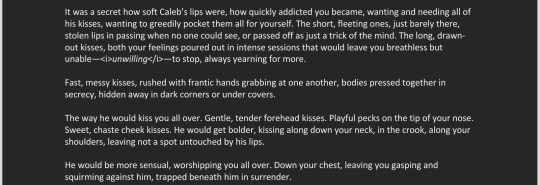
Roxie you're the only one who will understand me on this but
thinking of Caleb using his gravity manipulation evol to reduce the gravity around him so he can float
just like Gavin can manipulate his wind evol so he can float/fly
i....i need to write a fic about this....it's making me so soft because i am thinking of a very specific Gavin karma/moment 🥺🥺🥺
the gavin/caleb pipeline is ruining my life /lh
by the way mentally im still here bc. XIU... XIU HUHU MY LIFE IS IN YOUR HANDS omg the way im absolutely eating up any and every single caleb fic you write EVER 😭😭😭😭😭😭😭
#ೃ☆⁀➷ roxie 》#ignore the html tag#i formed a habit to make my life easier when uploading to ao3#🫣🫣🫣🫣🫣
5 notes
·
View notes
Note
Lost soul from Twitter, how do I use this app?
if you're an artist, use lots of hashtags, up to 30!! its not like twitter where you get punished for spam. don't use irrelevant hashtags its considered rly bad form. fandom and -core stuff works really well. search tags and you can see how active they are
also look into the tumblr queue. you can set it so it posts once every day between certain times so you dont have to input time/date EVERY SINGLE TIME !!!! it is SO NICE
if you're a follower, reblog all the stuff you like. that's how stuff gets shared on here cos there's no algorithm (unless youre in 'for you'). so its more important to boost what you like.
you can add tags in your reblogs so you can browse them later in different categories. this is a fucking amazing feature
you can also follow tags youre interested in and just browse a page of all your tags
also if you want you can customize your profile's html and css which is very fun, look up how to do that
if you want some artists to follow look on tofupixel.tumblr.com/tagged/follow that's my artist recommendation tag
have fun <3
182 notes
·
View notes
Text
Day 6 [Forms In HTML]
Introduction To HTML
Day 2 [Multimedia Elements In HTML]
Day 3 [Table in HTML]
Day 4 [Link Tag In HTML]
Day 5 [Lists In HTML]
Forms are basically used for collecting user information. And they are really important to learn. Here's a simple form in HTML:
Code:



Line By Line Explanation:
<form>: Used for creating forms. All the form elements go in this tag. Action: When submitted, data is sent to this file or URL [index.html] Method="post": Sends data
<label> : This describes the input tag for="___": Connects the label to the input with id="name" id : gives a unique identification to the tag <input>: It's used to make the form elements
<input> Type Elements :
type="text" : A simple text box is created.
type="email" : A box to input email.
type="checkbox" : A small square that users can tick. Can select multiple options using this.
type="radio" : A small circle, you can only select one option.
type="submit" : A button that submits the data to the server.
<textarea>: Accepts multiple lines of text. rows="4": It creates 4 lines cols="30": It creates 30 characters
<select> : Creates a drop-down list <option>: Creates an item in the dropdown. value="colorname": This is the data sent to the server if chosen.
Output For The Code:

_______________________
Hope This Helps !!
#code#codeblr#css#html#javascript#python#studyblr#progblr#programming#comp sci#web design#web developers#web development#website design#webdev#website#tech#html css#learn to code#school#study motivation#study aesthetic#study blog#student#high school#studying#study tips#studyspo#website development#coding
41 notes
·
View notes
Text
Insert Your Name (11)
Mafia!Jade Leech x Mafia!Reader
Link to series masterlist!
Notes and TW: Congratulations! You have successfully made it all about you (positive). This series will have mentions of blood, violence, crime (kidnapping, attempted assassination, extortion), and harassment, as one might expect from a mafia AU. Please enjoy!
Sorry that the tags haven't been working for the past couple of posts! I had to go in and edit the html for each individual one T-T please forgive me
Tags: @guava-enjoyer @itszzmoon @twstsandturns @myteacupisempty @rou-luxe @chikitasmol @night-shadowblood-writes2 @haveneulalie @owodi

A strange sense of satisfaction fills you as surprise fills the man’s face, but you don’t show it. You need to see this through. If you’re powerless in the face of his ability, you simply need to borrow his power. So what if he’s akin to a god? All you need to do is bring him to your side. Whoever that author is, whoever took over (Y/N)’s body—maybe they aren’t capable of using such an asset effectively. However, you’re confident you won’t let that advantage go to waste.
The man hums in thought. “I suppose it could be done without much fanfare. I would simply need to shift my attention to your experiences and abandon the current story. However, you would need to have your story recorded somewhere, in whatever form you may wish for it to take.”
You understand what he’s getting at. A story needs a medium, just like that manuscript. There are many options: on film, as a novel, as a collage of pictures. No strict rules exist for expression of self.
“I’ll keep a journal. Every day, I’ll write an entry, and I’ll also use it as a planner. This way, my ‘story’ will have the events that occurred in my life, how they affected my ‘character development,’ and also outline how I expect the story to ‘progress.’ Is that good enough?”
You still don’t think of yourself as a fictional character. You’re real, in every aspect, to yourself. But that doesn’t matter right now. Functionally, you’re a character to this man. You’ll use that assumption to put yourself in the most advantageous position.
“Yes, that would be a rather interesting way to tell your story. There are indeed many stories that were written in the form of diary entries, so this is not an issue at all. This would, in fact, make things easier for me. I would not have to go through the paperwork and expend energy to bring someone from another world since you already exist in Twisted Wonderland as an established character. There is just one thing you should know before you make this decision.”
“Tell me.” Of course there are strings attached. There always are. You prepare yourself. Self-sacrifice in small amounts is necessary, of course, but if there’s anything you can negotiate with . . . .
“I will have to take the previous author’s soul out of (Y/N)’s body. (Y/N)’s soul will regain control of her own body, since it was never removed, only dormant. Since the author’s original body cannot function without a soul, she cannot return to her world. It will disappear, never to be recovered, lost to the fabric of what forms this space. Are you still willing to proceed?”
“Is that it?” You expected something else. This has nothing to do with you giving up anything. In fact, it could even be considered a bonus. This woman whose story made your life and relationships exceedingly difficult will disappear down to the traces of her soul. It’s an easy decision. “Of course.”
“How cold-hearted you are.” He chuckles down at his teacup. It never seems to drain empty no matter how he sips it. “That is not an undesirable quality in protagonists, although they often do not have a happy ending in fairytales.”
“Is that supposed to deter me or something?” You stay resolute. “My future was always uncertain no matter if it’s a story or not. I’m in the mafia. I’ve come to terms that horrible things could happen at any moment because of the nature of my job a long, long time ago. It’s my responsibility to plan so that I reduce those chances as much as possible. And you’re going to help me.”
“Yes, I am.” He glances at the fireplace, which has burned down to glowing red embers. “Perhaps you should count yourself lucky that you are under my jurisdiction. I am partial to tragic endings, but I also do not mind if an amoral character triumphs in the end. Some of my peers would adamantly ensure it does not happen.”
You furrow your brows. This is not the first time he brought up something being under his “jurisdiction.” However, this is the first time he’s mentioned “peers” instead of “characters.”
“There are others like you?”
“Yes, of course. Twisted Wonderland is filled with too many stories for me to manage on my own. Since you are mainly involved with the Leech Mafia and stories of the Coral Sea, you fall under my jurisdiction.”
It makes sense. This man compared himself to a god, but he isn’t one. He isn’t omnipotent or omniscient.
“Who are they?”
He tilts his head. “You would not know us even if I told you.”
“I’m curious. Tell me anyway.”
“Such a curious character.” He glances at the embers again. “Alright, I see no harm in it. My peers overseeing Twisted Wonderland include Walt Disney, the Brothers Grimm, Hanna Diyab, Victor Hugo, and Lewis Carroll, among others.”
None of these names ring a bell. It is just a list of names, but having more information is never a bad thing.
“And your name? I should know how to address you.”
“Oh, I have not yet introduced myself to you? My apologies, I must be turning forgetful in my old age.” He laughs at himself in a good-natured manner. “My name is Hans Christian Anderson. It is a pleasure to meet you.”
You introduce yourself as well. He extends a hand to you. When your hands connect in a firm handshake, the new deal you’ve made feels solidified.
Anderson looks at the fireplace one more time. The light has died completely, the little room lit only by the moonlight pouring in the window. With a gentle but decisive clap of his hands, he stands from his armchair.
“That was a fruitful discussion, and I thank you for your patience and understanding. I fear time has run out, however, and so I will be sending you back shortly. I’ll place you right back where you came from: at the moment when I brought you here.”
“Hold on!” Too soon, too sudden. You still have so much to say. He holds up a hand, stopping your protests.
“If you’d like to communicate with me, simply write a request for it in your new journal. I wish you best of luck.”
And with that, the world goes white again.
This is the story of a girl whose name is no longer hers. A girl so common that she may as well be a faceless background character in another person’s story. A girl who wishes, more than anything, to be the protagonist of a love story that will sweep her off her feet and solve all her problems.
Her family is normal. Her friends, too. And so is she. It isn’t enough for her. The world inside that game she plays is so magical, so whimsical, so perfect. The characters are handsome, powerful, clever, funny, or rich, or some combination of those qualities. If she enters this world, surely all those wonderful characters would treat her as someone special. They’d love and revere her unconditionally. She pines for a man who would love her and her shortcomings in their entirety, no matter what she does.
The beauty about fictional characters is that because they are fictional, they can be whatever she wants them to be. She can wholeheartedly believe they’ll love her, and there is nothing wrong with that. But she isn’t satisfied with that alone. It needs to be real.
Desperately, she writes a story revolving around a faceless, flawless main character who she desperately wishes she could be. Everyday, the writing consumes her, dragging her into a fantasy of bliss. She begins to resent her reality. Nobody in real life will love her the correct way. Nobody can be as good as the characters she pours her love and headcanons on. She doesn’t consider how love can be gradual, nor does realize someone might have to get to know her before loving her. After all, in her fanfiction, the perfect mafioso loves her main character upon the first meeting and devotes himself with no questions asked. Isn’t that the ideal love?
One day, a miracle occurs. She meets a man who offers to make her story into her reality. Jumping on the chance to live her perfectly crafted life of happiness, she agrees. Finally. Finally, she will be loved the way she wants.
At first, everything went perfectly. Real life follows her fanfiction to the letter. Jade is charming, Floyd is endearing, and a string of coincidences leads her to meet Vil, another handsome bachelor. Love surrounds her at every turn. All she needs in this life are the handsome men who give her special treatment. After all, this body, this life—(Y/N)—was created by her, for her use. All of the previous relationships this body entertained no longer matter. They aren’t hers, anyway.
The polaroids that occupied her nightstand are probably in a landfill somewhere. The aesthetic was cute, befitting the tastes of a character she modelled after herself, but the person in them is irrelevant. Some side character she’s never going to see again. No matter; she’ll eventually replace those polaroids with cute photos of herself and her new love. (Y/N)—no, the placeholder—has served its purpose. It will not miss those useless decorations since it will never again have its own consciousness.
So where did it all go wrong? Perhaps it was wrong from the start. She should have cursed that old man for scamming her. Her happy ending was never a guarantee. How dare a throwaway side character upend her perfect, fairy tale ending? Is that even allowed? They’re all just characters anyway. How can they steal from a real person?
Until the very end, she couldn’t see anyone around her as anything other than characters in a story. Maybe if she did, she might have gotten the love she wanted. Now, she disappears, having never achieved the goal she so desperately grasped at. Like seafoam, her hopes and yearning for love bubbles and disappears.
Hans Christian Anderson places a book into an empty spot on one of his many shelves. He has always been fond of tragedies. As for this new story that’s unfolding . . . who’s to say how it will end? He’s a patient man. With a smile, he settles into an armchair and sips from a cup of tea. He’s looking forward to it. When it eventually ends, like all stories inevitably do, he’ll shelve it and find another story to bring to life.
The world suddenly flashes into focus. The sun’s dying embers flicker on the sea. Sand shifts between your toes. Fingers graze your neck. Before you can activate your Signature Spell, (Y/N) crashes into you and you both topple over into a bed of sand. Bloodlust raises the hairs on the back of your neck. But it isn’t coming from (Y/N). Instead, you instinctively wrap one arm around her and hold the other one out in front of you, shielding her from Jade.
“Wait, wait! Jade, it’s fine. I’m okay.”
He freezes. One of his hands stops a centimeter away from (Y/N)’s hair. She doesn’t react. Slowly, you lay back down, heaving a sigh. You shift her face to the side so that she doesn’t suffocate in your shoulder. Her eyelashes flutter against her cheekbones, complementing the slow rise and fall of her ribs.
“See? She’s asleep.”
Jade furrows his brows. “I fail to understand. Most importantly, are you sure you’re alright?”
“Yeah.” You chuckle, staring up at the stars that unveil themselves in the darkening sky. “I’m just a little tired.”
You explain everything to him. He seems skeptical, but eventually, he accepts it. He sits in the sand next to you, his hand covering yours. You pretend not to notice, but it offers a soothing calm to your exhausted mind.
“I’m sorry,” you say, glancing at his side profile. “Even if I write that Vil Schoenheit will cure your parents, it might not happen because of continuity issues. Maybe (Y/N) will still be able to convince him.”
“That’s alright.” He catches your gaze. “It would make the story progress more smoothly if we continue with our talks with Walrus.”
He accepted it so quickly. For that matter, so did you. You wonder briefly if there is something at play that makes you accept the reality of your situation as fact—if it’s because you’re a character after all—but that’s all speculation. Not worth your time and energy to figure out.
“Bottom line is, this is my story now. So I’ll make sure the curse on your parents is dispelled.”
“How reliable.” Jade gives you a gentle smile, one that causes an unfamiliar stirring in your chest. “Thank you. What would you like in recompense?”
You weren’t expecting him to offer anything at all. But since he offered, you aren’t one to refuse.
“Money.”
His quiet laughter blends in with the sound of rushing waves.
“No hesitation at all, I see. Of course, I will pay you adequately for your invaluable help.”
“I also want something else.” You fiddle with the strands of (Y/N)’s hair. “I’d like a vacation. Just a week or two after everything settles down so I can go back to my hometown with my mom.”
“Is that what the money is for?”
“Yeah.” Your heart feels a little lighter. “You should visit the Coral Sea after your parents wake up as well. I’m sure you’ll want to spend time with them.”
A pause. You scrutinize Jade’s expression in the low light, but his expression is wholly unfamiliar to you. He almost looks . . . nervous.
“Would you come with us?”
You blink. “Don’t you want to spend time with just your family?”
“Yes, but my parents would be delighted to have you over again. You have not been to our home under the sea in a long time, and I would be more than happy to show you around again.”
“It won’t be a bother?”
“Far from it.” His thumb rubs softly against the back of your hand. “I . . . We are very fond of you.”
You can’t help but think there’s an ulterior motive, but you accept. This wouldn’t be the first time you’ve travelled to their home under the sea, and this most likely won’t be the last.
Suddenly, (Y/N) shifts on your chest. A soft noise escapes her lips as though she’s finally awakened from a long nap. Her bleary eyes find yours. Kind, lovely, and gentle eyes. The eyes of the (Y/N) you know and love, the eyes of your friend.
“Huh? Are we on the beach? What happened?”
A relieved laugh bubbles out of your throat and you hug her tightly. Confused but sweet, she reciprocates with reassuring pats to your arm.
“Yeah, we’re on the beach. Let’s get you home.” You sit up and smile as she fusses over the sand in your hair. Normalcy is slowly but surely returning. “I’ll tell you everything on the way there.”
#twisted wonderland#disney twst#jade leech#twst x reader#twst jade#twst fanfic#jade leech x reader#mafia au#multi chap fic#slow burn
95 notes
·
View notes
Text
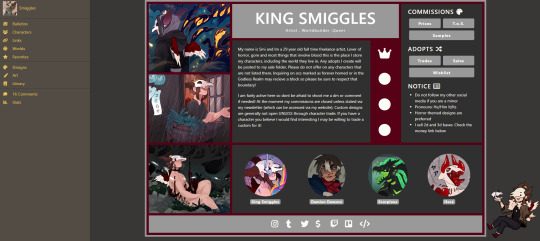
Do you want toyhouse codes? Free ones here. Just delete the ones you take. Feel free to add any you have Link
What is toyhouse??? Long post under the cut
TH is a site that lets you store your characters and their artwork as well as any literature you have about them. You can use HTML (and if you pay for premium, which is 20 ish bucks for a year) you can use CSS as well as upload multiple images at once (and a few other things)
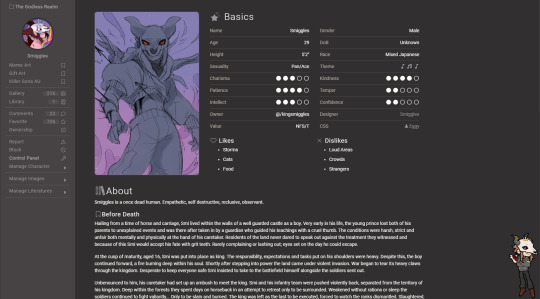

You can sort your characters images into different types of tabs Ones that allow you to have references, different forms, outfits, et cetera separated if you want. You can have completely different tabs that you click to show you another gallery (I use this for non canon art)

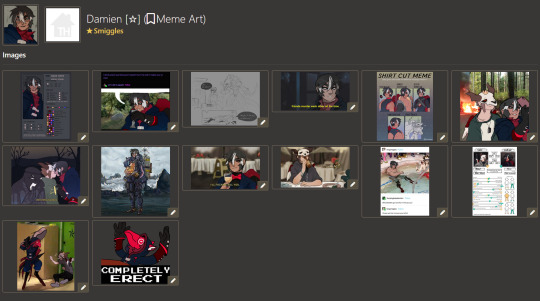
You can create "worlds" Many people use this for running species but you can also use it to flesh out your OC headworld. In a world you can make bulletins, forums for people to interact or roleplay, other people can submit their ocs to your world if you allow that
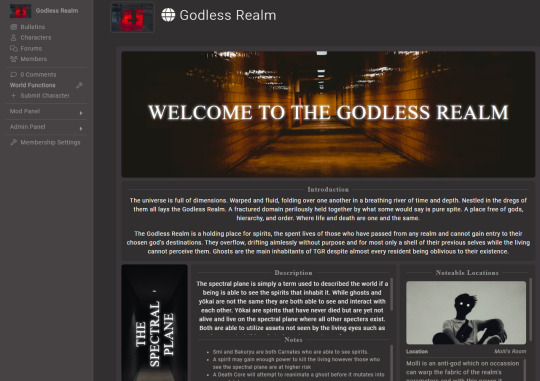

Bulletins and forum posts can be coded to include images, links, et cetera. Pretty much if you can do it with HTML you got it. If you enable it people can comment on your character, which makes it easy to sell adoptables there as well, with a tagging system! There is a public forum on toyhouse where people can sell their adopts, roleplay, share their species, get HTML help or share/find free HTML premade profiles to use! Generally, theres so much you can do there and its free! Just grab a code and go
301 notes
·
View notes
Note
Hi Hunni! I hope you don't mind me popping in to ask this but I saw you had a toyhouse.
I have recently also gotten a TH account but after some digging I've seen some negative feedback on the website, I'm just curious to see what your opinions on TH is and if it's worth using ^^
Feel free to ignore this
Hi Anon!
This is purely my opinion and experience, i have been using it for 5 years(?).
I enjoy using TH! Getting a code to make an account is hard if you don't have any premium user friends but if i recall people do share those codes for free. I'd say getting/setting up is easy.
I first got mine from a customer who seen that i don't have Toyhouse and proceed to give me a code to set up an account. A lot of my customers and mutuals in Instagram using Toyhouse, so I've decided to use it too.
I honestly don't see much negative reviews, which is surprising (/lh /nm). I don't think much of it too since i rarely use feature that may caused some bugs here and there. (HTML CCS code etc)
The team behind Tpyhouse is also quite fast in responding,i remembered reported a character and with some evidence, the character is gone in few hours.
You can make certain characters private or public, credit can be given if the person has Toyhouse or has website, the credit is also very specific, you can credit a basemaker, or if you collab with people you can credit them for the specific part(lineart etc)
---
The tag system is nice, similar with tumblr if i do say so myself. If you have same tags OC, you can put your OCs in different folders but also sort them whenever you click the tag (scuffed explanation). The tag also helps to trade, people can add "need art" for their OC that they would like to have more art, so in cases of art trade,they can just say "You can draw anyone with 'need art' tag".


---
I LOVE the tab system. The tab system is quite detailed and specific. I enjoy using the tab to divided many form or arts of my OC.



I also using the tab system to difference between my art and other's art of my sonas.

---
The HTML CCS (coding) are not for dumb people like me. But the accessibility is easy, there are many free codes to use out there. It makes your character pretty! What i like about Toyhouse (for premium user i think) you can customize your whole website itself!Each buttons can be different etc!


Overall, i think Toyhouse is very accessible and easy to use one you get the gist of it. For people who make commission or purchase commission i highly recommend it! It is currently one of the easiest accessible characters website.

33 notes
·
View notes
Text
BatB Week podfic instructions and tips

Thanks to everyone who signed up for the podfic exchange! If you signed up as a reader, you should have gotten a message with info on who you matched with. Send a DM if you missed the message.
(If you didn’t sign up, there is still time! We still need one more podficcer! The form to sign up is here.)
I don’t personally do voice/audio work, but I’ve pulled together some quick tips and instructions for recording, editing, and posting podfics below the cut. If someone else has better/more suggestions, please add on!
Recording and editing
Need audio recording/editing software? You don't need anything fancy; you can record it on whatever voice recording software comes installed on your phone (I have Samsung Voice Recorder, for instance), or use one of these free, beginner-friendly audio editors: Lexis Audio Editor (Android, iOS, Windows), Audacity (Windows, Mac, Linux), GarageBand (Mac), Audiotool (online).
Nastasia Marquez has a great tutorial on how to record and edit voiceovers for beginners in Audacity. It's very easy to follow along and gets straight to the point.
When recording, watch out for plosives and sibilances (e.g. your "pps," "sss," and "shh") as they can easily hinder the quality of your recording by being aggressive to the ear. It’s hard to give tips since everyone will be working with different devices, but my suggestion would be to put some space between your mouth and the microphone, or have your device inside a sock. You can learn more on them and how to deal with them here.
A good way to get clean audio is to record under a blanket. It’s silly, but it’s as close to a padded studio as you can get for free. It reduces echo and makes the audio sound much better no matter the mic you use.
Don't be afraid to record in short batches! There’s no need to do it in long unbroken takes. Piece it together later.
Posting the audio file
Once you have your finished audio file, you have to upload it somewhere, because AO3 can host the link to it, but not the audio file itself. It seems like Internet Archive is popular for hosting podfic audio files. You can also host it on Google Drive, YouTube, Mediafire, or Spotify.
Posting the podfic to AO3
Go to ‘Post > New work’ just like you would for posting any fic to AO3.
In the ‘Post to Collections / Challenges’ field, enter “beauty_beast_week_2025” (see first screenshot below).
Check the box that reads ‘This work is a remix, a translation, a podfic, or was inspired by another work’ and include the URL to the original fic (see first screenshot below). This not only gives credit to and notifies the author, but it adds a link to your podfic from their fic (when they approve it) so that your podfic gets more hits and kudos.
In the body of the post, insert the HTML to embed the audio file (see second screenshot below). It’s easy: AO3 has a simple guide to copy and paste from here.
If you’d like, you can add more content to the body of the post, like the event banner or some text, but it’s not necessary.
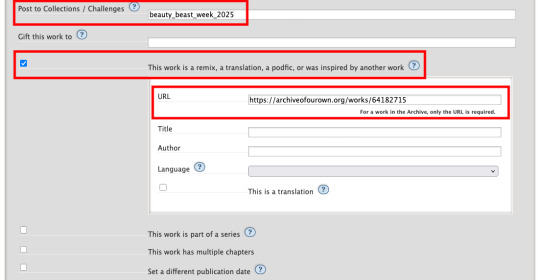

Here are some examples of BatB podfics so you can see how they’ve set things up: The Great Wide Somewhere, Mutual Care, and The Beast Within
Posting to the event
Important: tag the @beauty-beast-week account within the body of your Tumblr post itself by typing the @ symbol, typing beauty-beast-week, and then selecting that account name from the autocomplete menu that appears. This is the only way to be sure we see your post so we can reblog it from this account and include it in our master list posts.
Other than that, make sure you post to Tumblr on the day of the prompt you're using and include in your post:
Tag the @beauty-beast-week account within the body of the post (yes, I’m repeating myself)
Which fic your podfic is for, and link to it
Which day/prompt your podfic is for, in the body or tags
The event hashtag #batbweek and/or #batbweek 2025
Any other appropriate hashtags (characters, ship, NSFW and content warnings)
Optional: The event banner (save from the top of this post) or the day's banner (in the full event instructions that will come later)
Heads up authors! Check your AO3 email during the event!
If your work was adapted into a podfic for the exchange, check your email and follow the link to approve linking back the podfic to your original work so more people can discover the podfic version!

Send an ask or DM if you have any problems or questions!
7 notes
·
View notes
Text
How To Sign Up To This Gift Exchange
This exchange does signups on Ao3, to help with matching! (Last year it took us 8 days to do it by hand and that's just not sustainable).
Once you are on Ao3, there are two sections, one for your requests (stuff you’re telling people (and the machine) would be a good gift for you), and one for your offers (stuff you’re telling the machine that you can make as a gift for other people). Here’s how you fill them out.
Requests
First you go to the collection that you want. The all-ages one is here, and if you are opting into NSFW (and are over 18), you can go to the 18+ collection! In the sidebar on the left-hand side of the page there is a button for sign-up form, you can press to be taken to the sign-up form.
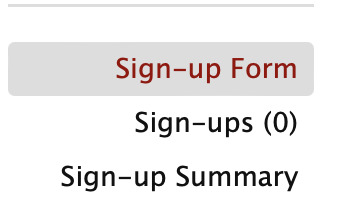
That brings you to the first page, which looks like this.
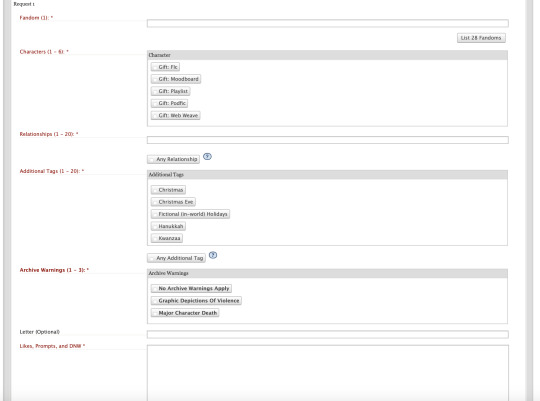
Lots of buttons, but don't worry, it's pretty simple once you get the underlying logic!
Let's say I start with 3rd Life. I know I want to opt into pearl gifts, shadowrot, and platonic desert duo. What will that look like?
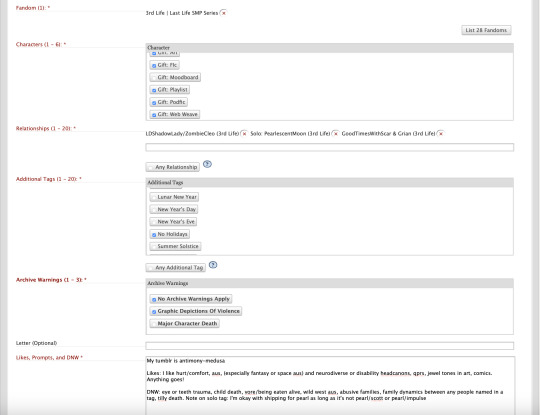
So I selected the fandom I wanted (3rd Life) and what types of gifts that I was open to. And then I selected the relationships that I'd like as a gift! I could match on any one of these, my gifter might have offered only one relationship in this fandom— but we match on one, so they know which relationship to focus on! And each of those tags is formatted a little differently— the desert duo one the names are connected with a & (so that means i'll get something platonic), the shadowrot one the names are connected with / (so that means I'll get something shippy if my gifter chooses to write that relationship), and the pearl tag is Solo, so that means I could get anything as long as pearl is still the focus! So I have to specify later if I'm okay with shipping or not, or any relationships I don't want.
Additional tags is telling people what kind of holidays I'm open to in my gift— not everybody celebrates the same holidays! For this one I don't want any holidays, so I selected no holidays. And then archive warnings is telling people if I'm okay with archive warnings in my gift— because it's 3rd life I'm okay with graphic depictions of violence, or I'm also okay with no archive warnings in my gift at all! Note that if you select archive warnings that just means you're opting into them as an option, not that your recipient HAS to give them to you. And then we get down to the free text box, where I give my gifter a little more idea of how to make a gift that I'd like. We start with my tumblr, because my gifter has to know how to give me my gift on tumblr eventually! And then a list of likes, stuff to give my gifter some ideas. Mods ask that you include at least a couple likes, and/or some prompts, or link a letter in that letter text box.
What's a letter? Ao3 has a text limit of 5 thousand characters in that box, and sometimes people exceed it because they have detailed prompts— especially if they're requesting lots of different ships as options! You also can't do any formatting unless you code it in HTML. So, if you are running out of space on Ao3, you can write the information for your gifter offsite, on Dreamwidth or Google Docs or a tumblr post! Here is an example from another exchange of what a letter can look like.
IMPORTANT NOTE: If you are linking a google doc letter, make sure that you are not using an account that has your real name in it. Make a fandom email for it, or host the letter somewhere like tumblr or dreamwidth, where your real identity will not be connected to your fandom identity. And if you link a tumblr, don't change your blog URL or the letter will disappear for people!
Anyways, I'm not doing a letter cause I'm just doing a quick and dirty signup, so I just did some likes and my DNW! You can also add specific prompts if you want (and it's nice for your gifter if you do) but it's not required!
What is a DNW? DNW stands for Do Not Want, and it's anything (anything) that would ruin a gift for you. You can DNW certain characters, crossovers, types of aus, types of content, specific ways of writing or art, quotes from specific people if you're requesting web weaves, specific music if you're okay with playlists, types of endings, specific sounds if you're requesting podfic— the list goes on. I did a short DNW there to make it all fit within the screen, but my normal one is quite long. There will be a thread in the discord where people can compare DNWs to see if there's anything you want to add to yours.
The rule is that as long as you are polite (nothing like "no kid fic because it's creepy to age down characters") and specific (nothing like "no kinks", because that is too broad and subjective of a category for people to try and navigate) and you don't box your gifter into a specific gift (nothing like "nothing that isn't canon compliant fic specifically about the fairy fort burning") then you're good to go! Because I selected a Solo tag I specifically have to tell my gifter if I'm okay with shipping and which ships, so there's a line there about that. You do need to either put down a DNW or say DNW: no restrictions, so that your recipient knows that everything is on the table.
Please make sure that your DNW and your letter link (if you're using a letter) is included on every fandom box. This is for two reasons. 1) we need to make sure your DNW is in a format that locks once it gets sent to your gifter, not somewhere you could still edit it, like tumblr. 2) There is an option to separate up requests by fandom for people who are looking for extra gifts to give, and that means someone might see only one fandom of your request before giving you something. You need to make sure that anyone who sees just one fandom of your request still has all the information necessary to make a gift.
Note: If you are signing up to the 18+ collections, it's a very good idea to include specific NSFW likes and NSFW DNW because people's tastes can vary wildly, and there's nothing worse than someone carefully making you a gift that's exactly the wrong type of thing for you because are into different things. Give your gifter something to work with and a direction to head in!
And then there's the optional tags box. This is for extra holidays! The additional tags are how you tell someone what holidays you're good to have in your gift, and it only allows you to select 20 at once. But if you wanted to select more holidays than that, you can put them down in the optional tags box! Or you can select any additional tags and just do every holiday at once.
And technically, that's three relationships, so I could call it done there! That's the minimum to request, I'm done. But what if I like other fandoms too? How do I add them? Well. There is a button for that.

In that case, I can hit this button, and it brings me up another request box, and I can do this all over again with another fandom! You can go up to 10 fandoms, with a maximum of 20 tags for each.
But what if you really really REALLY like rats smp and there are 30 tags in the tag set and you want them all?
Two options. One is that instead of putting in relationship tags one by one, you hit the any relationship button.

That will match you to any relationship in the tag set. That doesn't mean any tag on Ao3, but it does mean any tag that's been nominated into the tag set, and we keep the tag nominations open so people can get in their last-minute ships. If you select this one, keep an eye on the tag set to make sure that nobody nominates something that's a hard no for you.
Option two is that you hit the button for another request, and then you just do Rats SMP again, with different tags! You can request the same fandom more than once, with different tags— so you can do a request for your shippy tags and one for your platonic ones, or one for your family tags and one for your non-family ones, or one for desert duo and one for convex, or any other way you want to split it up! As long as you go over the minimum of three relationships requested, you've filled out a valid request! Request ten different fandoms or the same one ten times— it'll work.
Offers
And then we scroll down a little bit to the offers page. Let's take a look at it!

So this is telling the machine the type of gift you are open to making, and making sure you're matchable to someone else's request that will look like the one we just did. You've gotta give the machine the information in a way it'll understand so it can whirr away and give you a match to someone who requested the type of stuff you like to make. So how is this done? I did 3rd life again for the fandom, and the type of gift I can make is fic, so I selected fic for the gift type.
I only need a minimum of three relationships for the relationships, but there's more stuff that'll write than I wanted as a gift, so I have a bunch of relationships in there! I could match on any one of them, so I make sure to offer just relationships I'm confident I can write. Like with the requests, / means a romantic (or sexual, if you are in the 18+ collection) relationship, and & means platonic. Solo: means I can bring any relationships I want into the fic as long as the focus is on the person in the tag and my recipient hasn't DNWed those characters.
When it comes to holidays I COULD go down the list and select everything, but it's easier to just select any additional tag, and that'll make sure I'm matchable no matter what holidays someone selects! I figure that I can do my research on different holidays, and maybe ask for a beta reader to help out if I match on a holiday I'm not used to!
On archive warnings I select no archive warnings apply and graphic depictions of violence, and that means I'm matchable to people who selected either one of those.
And Optional tags is for overflow holidays, but I already selected any holidays, so I'm good to go! This is a complete signup! I can submit it now!
But what if I want to offer other fandoms too? There's rats SMP, there's Hermitcraft, I'm still a DSMP fan—

You can add up to ten fandoms, and same as with requests, you can go up to either 20 tags or "any tag (in the tag set)" for each fandom.
And then you scroll down to the bottom and hit submit, and that's it, you're officially signed up!

Editing and etc
You can go back and edit and tweak your signup any time you want until signups close— remove ships, add them, add prompts, edit your DNW— it's all editable until midnight EST on the 17th of November, when signups close and lock for us to run matching on.
The matching requires:
1 match on fandom
1 match on character (gift type)
1 match on relationship
1 match on additional tags (holidays)
1 match on warnings
So you will be assigned to someone where you have at least one tag in common in all of those categories— a fandom you selected, a gift type you can make, a relationship you said you can do, a holiday you opted into, and a level of archive warnings you said you were good with. The system tries to match you with more tags, but sometimes there are edge cases and you only match on one tag. No matter what is on your recipient's signup, you only have to make one gift, and you only have to make a gift with the tags you signed up with— if someone requested major character death and no warnings apply and you offered no warnings apply, you just can focus in on no warnings apply. Your requests are public, so that people can give bonus gifts if they want to and so that we can pinch-hit your requests if necessary (and so your recipient can see what you requested), but your offers are private (only the mods see them). Make sure you only request things which you are okay having public, or speak to the mods about setting up a sock account.
Signing up gives mods access to your Ao3 email (it's how we send you your assignment), so make sure the email attached to your AO3 account is one that a) you check regularly, and b) are comfortable with exchange mods seeing. You can verify your email here: archiveofourown.org/users/[your ao3 name here]/change_email If for some reason we can’t find a way to give you an assignment (say you only offered ships that nobody was requesting), mods will ask you to make more offers until we can give you an assignment. If we can't give you an assignment— there's nobody in the whole exchange you could make a gift for— you will not be able to continue in the exchange. If we can’t assign you to someone (either you are requesting things nobody offered or the matching just didn't work out to cover you), you will be an initial pinch hit, and someone will opt in to take you on as an extra assignment. Initial pinch hits are normal and expected in an exchange of this size, don't panic if you see yourself as one of them. If there is someone in the exchange that you don’t want to match with (for any reason ranging from "we have each other blocked on tumblr" to "we give each other gifts a lot and we want to give gifts to other people this time"), contact the mods through the ticket system and we’ll hand-adjust the matches. We can only do this before matches go out— if you match to someone you can't create for you'll have to drop your assignment and send it to pinch hits, which we would like to avoid happening if at all possible. Please make sure you send us any Do Not Match requests before signups close!
19 notes
·
View notes
Text
Is there an actually complete guide to AO3's limited HTML somewhere? I know for a fact that some features work but only under slightly weird rules.
For example, if you're using the <a> tag to form an anchor to refer to later, you HTML will end up looking like <a name="Anchor" rel="nofollow" id="Anchor"> when it's done auto-correcting in the Preview. If you type in <a name="Anchor"> or <a name="Anchor" id="NotAnchor">, it will autocorrect to that, but if you type <a id="Anchor"> it will correct to an <a> tag whose only attribute is rel, or <a rel="nofollow">. (The rel="nofollow" attribute has no practical effect for most users' purposes.)
I know that AO3 will autocorrect any incompatible HTML to compatible HTML, but I don't know what the compatible HTML is, and the above <a name="Anchor"> example demonstrates that some things are compatible but don't look compatible unless you do them right!
This is especially confusing because the editor will autocorrect some HTML as soon as you switch from the HTML editor to the Rich Text editor - but it won't correct everything. I've attempted to do slightly funky things with styling that seemingly worked just fine in the editor, but vanish when I preview the chapter.
For example, here I am trying to use using the Greek character Ψ as a list bullet. When I originally typed it into the html field, I used the actual character Ψ. As soon as I switched to rich text and then back to html, it had autocorrected to Ψ, which is the escape character for Ψ. (For those who don't know, escape characters are a special code to tell the browser that this is NOT supposed to be code. <p> is an html tag; < p > will literally render "< p >".) So, it accepted the style attribute and the list-style-type, but it forced it into an escape character. So far so good.

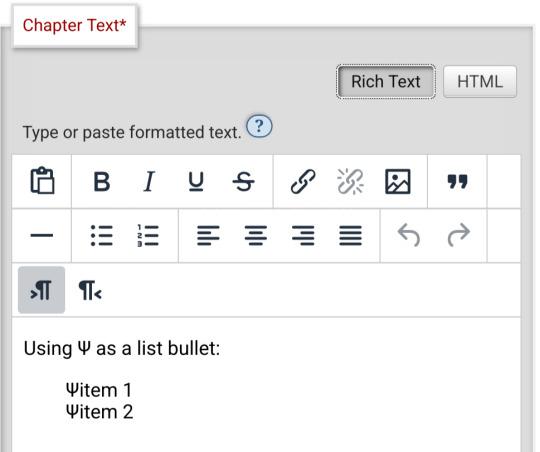
Until I click preview. Now the custom bullet is gone, replaced with the standard circle. If I click edit again, the code has removed the CSS attribute that changed the bullet... and also replaced the escape character Ψ with the character Ψ.
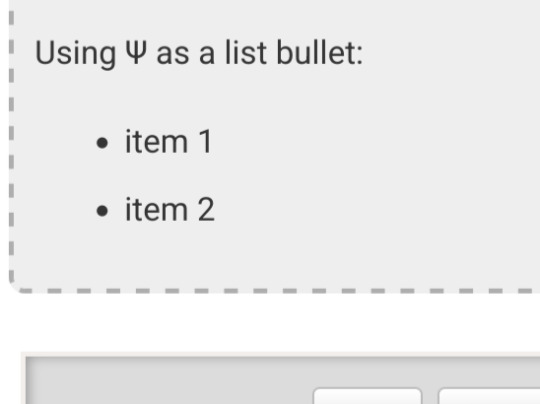
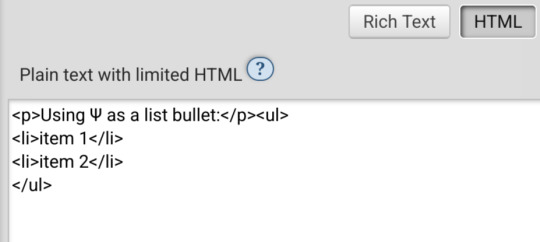
Weird.
#ao3#otw#html#ao3 formatting#ao3 html#I do not mind the lack of a clear standard at all#OTW is a nonprofit full of overworked staff and volunteers#and complete documentation is very hard#I just wanna be able to nerd more effectively#Can anyone direct me to the part of the open-source code that dictates HTML autocorrection? Is that a thing I can examine?
19 notes
·
View notes
Text
Are Game Blogs Uniquely Lost?
All this started with my looking for the old devlog of Storyteller. I know at some point it was linked from the blogroll on the Braid devlog. Then I tried to look at on old devlog of another game that is still available. The domain for Storyteller is still active. The devblog is gone.
I tried an old bookmark from an old PC (5 PCs ago, I think). It was a web site linked to pixel art and programming tutorials. Instead of linking to the pages directly, some links link led to a twitter threads by authors that collected their work posted on different sites. Some twitter threads are gone because the users were were suspended, or had deleted their accounts voluntarily. Others had deleted old tweets. There was no archive. I have often seen links accompanied by "Here's a thread where $AUTHOR lists all his writing on $TOPIC". I wonder if the sites are still there, and only the tweets are gone.
A lot of "games studies" around 2010 happened on blogs, not in journals. Games studies was online-first, HTML-first, with trackbacks, tags, RSS and comment sections. The work that was published in PDF form in journals and conference proceedings is still there. The blogs are gone. The comment sections are gone. Kill screen daily is gone.
I followed a link from critical-distance.com to a blog post. That blog is gone. The domain is for sale. In the Wayback Machine, I found the link. It pointed to the comment section of another blog. The other blog has removed its comment sections and excluded itself from the Wayback Machine.
I wonder if games stuff is uniquely lost. Many links to game reviews at big sites lead to "page not found", but when I search the game's name, I can find the review from back in 2004. The content is still there, the content management systems have been changed multiple times.
At least my favourite tumblr about game design has been saved in the Wayback Machine: Game Design Tips.
To make my point I could list more sites, more links, 404 but archived, or completely lost, but when I look at small sites, personal sites, blogs, or even forums, I wonder if this is just confirmation bias. There must be all this other content, all these other blogs and personal sites. I don't know about tutorials for knitting, travel blogs, stamp collecting, or recipe blogs. I usually save a print version of recipes to my Download folder.
Another big community is fan fiction. They are like modding, but for books, I think. I don't know if a lot of fan fiction is lost to bit rot and link rot either. What is on AO3 will probably endure, but a lot might have gone missing when communities fandom moved from livejournal to tumblr to twitter, or when blogs moved from Wordpress to Medium to Substack.
I have identified some risk factors:
Personal home pages made from static HTML can stay up for while if the owner meticulously catalogues and links to all their writing on other sites, and if the site covers a variety of interests and topics.
Personal blogs or content management systems are likely to lose content in a software upgrade or migration to a different host.
Writing is more likely to me lost when it's for-pay writing for a smaller for-profit outlet.
A cause for sudden "mass extinction" of content is the move between social networks, or the death of a whole platform. Links to MySpace, Google+, Diaspora, and LiveJournal give me mostly or entirely 404 pages.
In the gaming space, career changes or business closures often mean old content gets deleted. If an indie game is wildly successful, the intellectual property might ge acquired. If it flops, the domain will lapse. When development is finished, maybe the devlog is deleted. When somebody reviews games at first on Steam, then on a blog, and then for a big gaming mag, the Steam reviews might stay up, but the personal site is much more likely to get cleaned up. The same goes for blogging in general, and academia. The most stable kind of content is after hours hobbyist writing by somebody who has a stable and high-paying job outside of media, academia, or journalism.
The biggest risk factor for targeted deletion is controversy. Controversial, highly-discussed and disseminated posts are more likely to be deleted than purely informative ones, and their deletion is more likely to be noticed. If somebody starts a discussion, and then later there are hundreds of links all pointing back to the start, the deletion will hurt more and be more noticeable. The most at-risk posts are those that are supposed to be controversial within a small group, but go viral outside it, or the posts that are controversial within a small group, but then the author says something about politics that draws the attention of the Internet at large to their other writings.
The second biggest risk factor for deletion is probably usefulness combined with hosting costs. This could also be the streetlight effect at work, like in the paragraph above, but the more traffic something gets, the higher the hosting costs. Certain types of content are either hard to monetise, and cost a lot of money, or they can be monetised, so the free version is deliberately deleted.
The more tech-savvy users are, the more likely they are to link between different sites, abandon a blogging platform or social network for the next thing, try to consolidate their writings by deleting their old stuff and setting up their own site, only to let the domain lapse. The more tech-savvy users are, the more likely they are to mess with the HTML of their templates or try out different blogging software.
If content is spread between multiple sites, or if links link to social network posts that link to blog post with a comment that links to a reddit comment that links to a geocities page, any link could break. If content is consolidated in a forum, maybe Archive team could save all of it with some advance notice.
All this could mean that indie games/game design theory/pixel art resources are uniquely lost, and games studies/theory of games criticism/literary criticism applied to games are especially affected by link rot. The semi-professional, semi-hobbyist indie dev, the writer straddling the line between academic and reviewer, they seem the most affected. Artists who start out just doodling and posting their work, who then get hired to work on a game, their posts are deleted. GameFAQs stay online, Steam reviews stay online, but dev logs, forums and blog comment sections are lost.
Or maybe it's only confirmation bias. If I was into restoring old cars, or knitting, or collecting stamps, or any other thing I'd think that particular community is uniquely affected by link rot, and I'd have the bookmarks to prove it.
Figuring this out is important if we want to make predictions about the future of the small web, and about the viability of different efforts to get more people to contribute. We can't figure it out now, because we can't measure the ground truth of web sites that are already gone. Right now, the small web is mostly about the small web, not about stamp collecting or knitting. If we really manage to revitalise the small web, will it be like the small web of today except bigger, the web-1.0 of old, or will certain topics and communities be lost again?
60 notes
·
View notes
Text
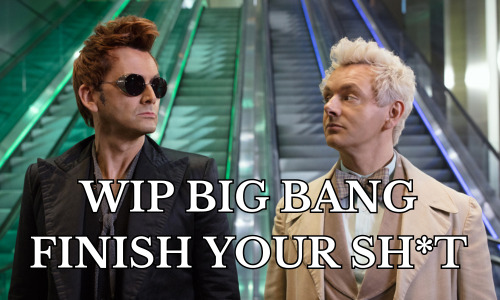
Round 3 of the Regular WIPBB art claims is live! You may claim as many fics as you want, just fill out a separate form for each and give each claim a different username.
Art claims for this round will be open until August 7th!
This is just one of the stories still available for claiming...
Good Omens (All Media Types) #041 Title: What Happens in Eden Stays in Eden Pairing/Characters: Aziraphale, Crowley, Gabriel, Satan, Michael, Beelzebub, Minor Background Characters, Aziraphale/Crowley, Crowley/Satan Rating: Mature | M Warnings/Tags: Chooses not to use Warnings Human au, summer camp au, underage, unhealthy relationships, power imbalance, abuse of authority, manipulation, grooming, dubious consent, recreational drug use, bullying Summary: When sixteen year old Ezra Fell has to spend his summer at a camp he used to go to as a child, his best friend Anthony Crowley begrudgingly agrees to go with him.
Stumbling between wanting to maintain their friendship and his growing crush, Crowley finds himself thrown into a messier situation than he has been expecting.
And here are the links to the claims list and the form to claim fics:
#good omens#aziraphale#ezra fell#crowley#anthony j crowley#gabriel#satan#michael#good omens beelzebub#aziracrow#aziraphale x crowley#ineffable husbands#ineffable idiots#ineffable spouses#satan x crowley#signal boost#wip big bang#looking for an artist
23 notes
·
View notes
Text
Day 7 [Semantics In HTML]
Introduction To HTML
Day 2 [Multimedia Elements In HTML]
Day 3 [Table in HTML]
Day 4 [Link Tag In HTML]
Day 5 [Lists In HTML]
Day 6 [Forms In HTML]
Code:

Line By Line Explanation:
Semantic Tags in HTML give clear meaning to the code. These are tags like:
<header>: Used for the title of the page.
<nav>: Contains navigation links of the website.
<main>: The main part of the page.
<section>: A group of content that is similar.
<article>: A group of content that is an independent piece.
<aside>: Extra info, like side notes.
<footer>: The bottom of the page that contains the copy rights and additional info.
Navigation Tag:
The navigation tag must be within an unordered list tag. And each item of that list must contain the link tag that should have the URL of that specific page.
Comments In HTML:
It is a note in your code that the browser ignores.
It’s just for you to read.
You can use it to explain your code or temporarily hide some code.
Syntax Of A Comment:
<!-- This Is A Comment -- >
Output Of The Code:

Notes: The arrows and the words in red are something I included. It is not included in the code!
______________
Hope This Helps :)
#code#codeblr#css#html#javascript#python#studyblr#progblr#programming#comp sci#web design#web developers#web development#website design#webdev#website#tech#html css#learn to code#school#study motivation#study aesthetic#study blog#student#high school#studying#study tips#studyspo#website development#coding
23 notes
·
View notes
Text





Frey...
ᴍᴜʟᴛɪ-ꜰᴀɴᴅᴏᴍ | ꜱᴘᴏɪʟᴇʀꜱ! | ᴍᴀʟᴇ ʀᴇᴀᴅᴇʀ ʙʟᴏɢ [ꜰᴛᴍ & ᴄɪꜱ]
ᴀʙᴏᴜᴛ ⨟ ʀᴜʟᴇꜱ ⨟ ᴍᴀꜱᴛᴇʀʟɪꜱᴛ ⨟ Qᴜᴇᴜᴇ ⨟ ᴀᴏ3 ⨟ ɴꜱꜰᴡ ʙʟᴏɢ ⨟ ᴋᴏꜰɪ! ⨟ ꜱᴛʀᴀᴡᴘᴀɢᴇ
𝗥𝗲𝗾𝘂𝗲𝘀𝘁 𝗦𝘁𝗮𝘁𝘂𝘀
closed ♡
𝗖𝘂𝗿𝗿𝗲𝗻𝘁 𝗛𝘆𝗽𝗲𝗿𝗳𝗶𝘅𝗮𝘁𝗶𝗼𝗻
Honkai Star Rail & Elden Ring & Twisted Wonderland [I prioritize asks & fics for these fandoms!]
Boothill, Mydei, Gallagher, Phaino, Leona and Idia Asks tend to be answered quicker than other characters requested.
𝗧𝗼 𝗗𝗼 ⨟ 𝗙𝗿𝗲𝘆𝗶𝘁𝗼'𝘀 𝗠𝗮𝗶𝗱 𝗖𝗮𝗳𝗲
◛ Kiss Me Goodbye [Boothill x Reader]
◛ On The Clock [Moze x Reader]
𝗨𝗽 𝗡𝗲𝘅𝘁 (𝗔𝘀𝗸𝘀, 𝗛𝗖𝘀, 𝗗𝗿𝗮𝗯𝗯𝗹𝗲𝘀, & 𝗠𝗼𝗿𝗲)
◛ How He Knew You Were The One [Boothill, Gallagher, Mydei, Phainon, Anaxa x Reader]
◛ Nice Pillows [Mydei, Phainon, Gallagher ver.]
𝗟𝗼𝗻𝗴 𝗙𝗶𝗰𝘀 (𝗪𝗜𝗣𝗦)
◛ Blessed Are The Peacemakers [Boothill x Reader]
◛ Summer Sun [Arthur Morgan x Reader]
◛ Strawberry Season [Gallagher x Reader]
◛ Can You Hear Them Sing? [Mydei x Reader]
𝗠𝗼𝘀𝘁 𝗥𝗲𝗰𝗲𝗻𝘁 𝗪𝗼𝗿𝗸
↺ Extra Dose Of Lovin'
𝗠𝗼𝘀𝘁 𝗥𝗲𝗰𝗲𝗻𝘁 𝗠𝗮𝗶𝗱 𝗖𝗮𝗳𝗲 𝗘𝗻𝘁𝗿𝘆
↺ Odd Customs
𝗜𝗻𝗳𝗼
✶ the maid cafe event is now closed while I work on the requests!
✶ works that are italic & bold are the ones im currently working on
✶ requests are not 'first come, first serve', i work on what i want to at my own pace, including requests and my own ideas. this blog was created for MY indulgence.
✶ all of my finished pieces + my rules and what not are tagged with #⁺◟freyito. my rambles/whatever thoughts/random posts are tagged with #freyposting.
𝗗𝗶𝘀𝗰𝗹𝗮𝗶𝗺𝗲𝗿
✶ dni: proshippers (as in: those who ship pedophilic, incestuous, and other ships that glorify things such as rape, grooming, sexual assault, and more), zionists, racists, transphobes, homophobes, terfs, advocates for ai, ai bot creators, if you use ai/chatbots/art/etc.
✶ i block freely.
✶ the headers for my about, rules, etc. are REDRAWS! they are my art, however they are redraws of this ending for chainsaw man! please do not reupload my art or use it in any way, shape, or form! for more examples of my art, please see my commissions tab!

© freyito, 2025, HTML organized by © amorphous
64 notes
·
View notes